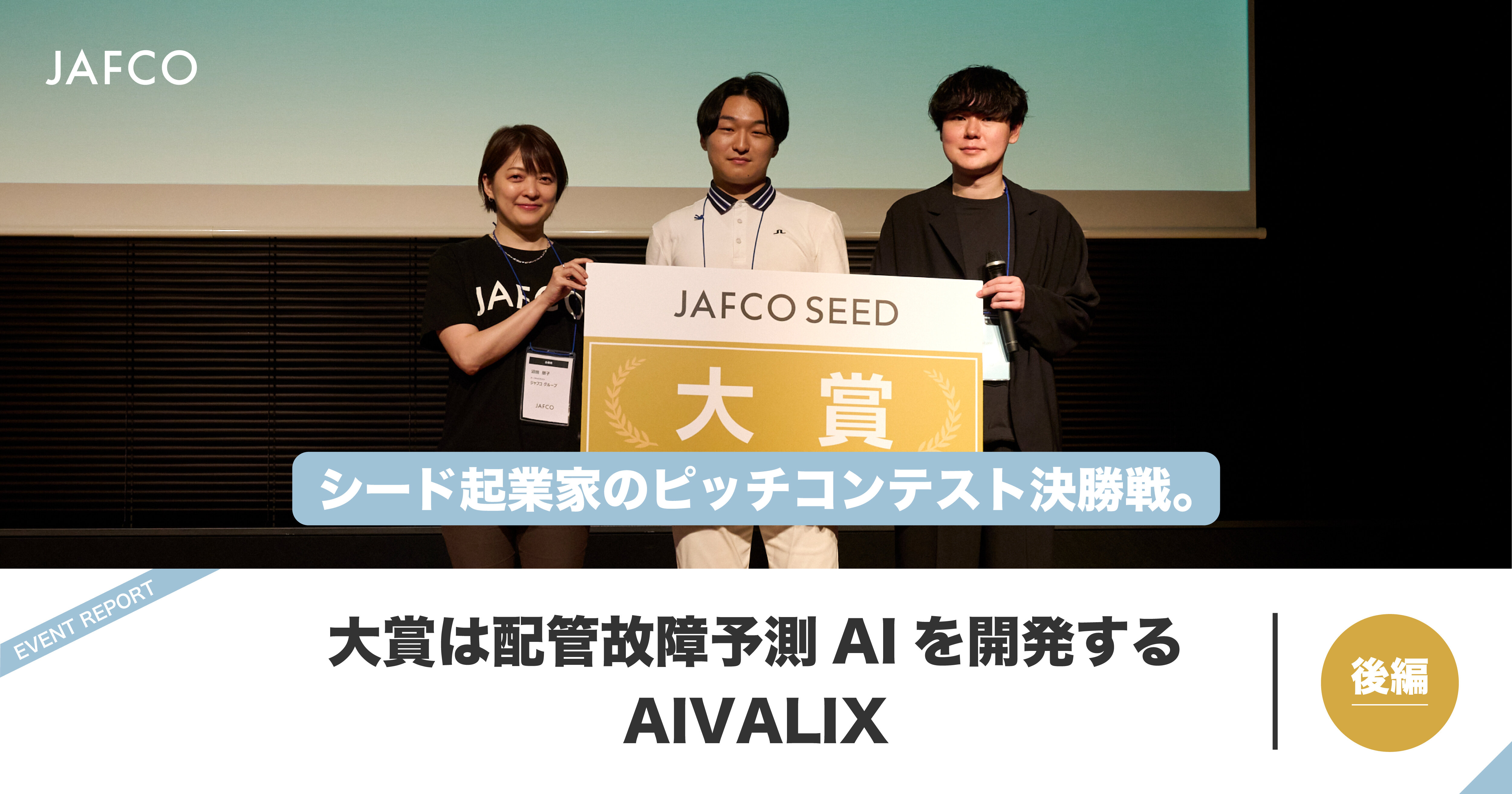
Event Report
JAFCO SEED 2025: A Conference for Seed-Stage Entrepreneurs—A Report on Sessions by Entrepreneurs in High-Growth Sectors (Part 1)
#JAFCO SEED
.jpg)
On Thursday, July 10, 2025, JAFCO held its conference for seed-stage entrepreneurs, JAFCO SEED 2025, at Bellesalle Onarimon Tower.
Following the success of last year's inaugural event—born from the desire to "create an environment where seed-stage entrepreneurs and aspiring founders can more easily take on challenges"—this year's conference was another bustling event, drawing over 200 participants. The day featured sessions discussing high-growth sectors both in Japan and abroad, a pitch contest by seed-stage entrepreneurs, and a meetup program for networking with major corporations and angel investors.
In Part 1 of our event report, we will cover three sessions on the themes of "Market Strategies for Generative AI Startups," "The New Trend in Business Expansion: The 'Roll-up Strategy'," and "Entry Opportunities for Startups in the Content Business."
Session 1: Market Strategies for Generative AI Startups
The first session featured three individuals involved in AI startups. The speakers were Yotaro Katayama of Preferred Networks, a company engaged in deep learning research and development; Tatsuya Itai of secondz digital, which operates an AI agent business; and Seiichiro Sumiyoshi, head of AI-related investments at DeNA. JAFCO's Kota Tanahashi joined as the moderator.
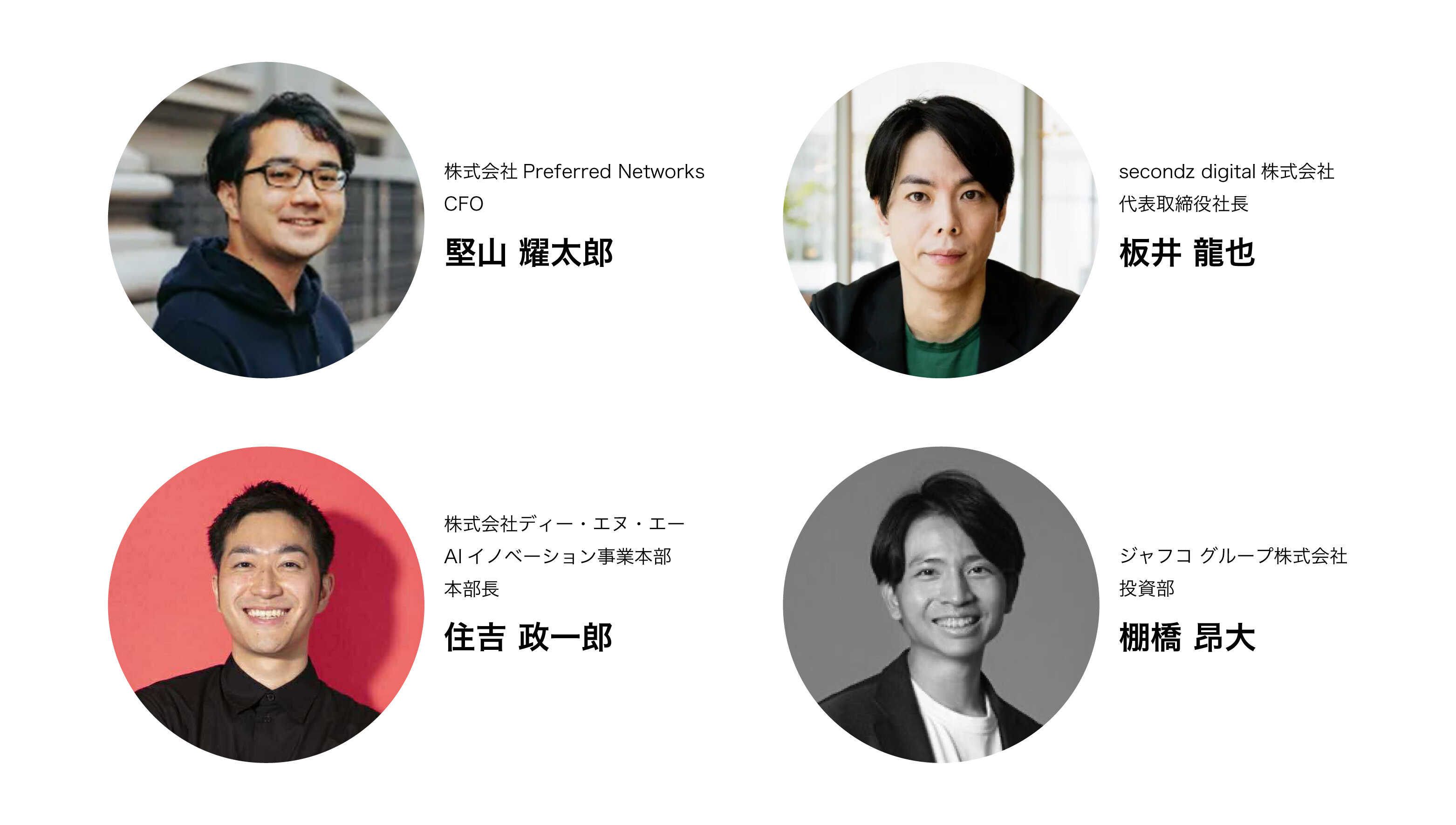
The State of the Generative AI Market for Large Enterprises
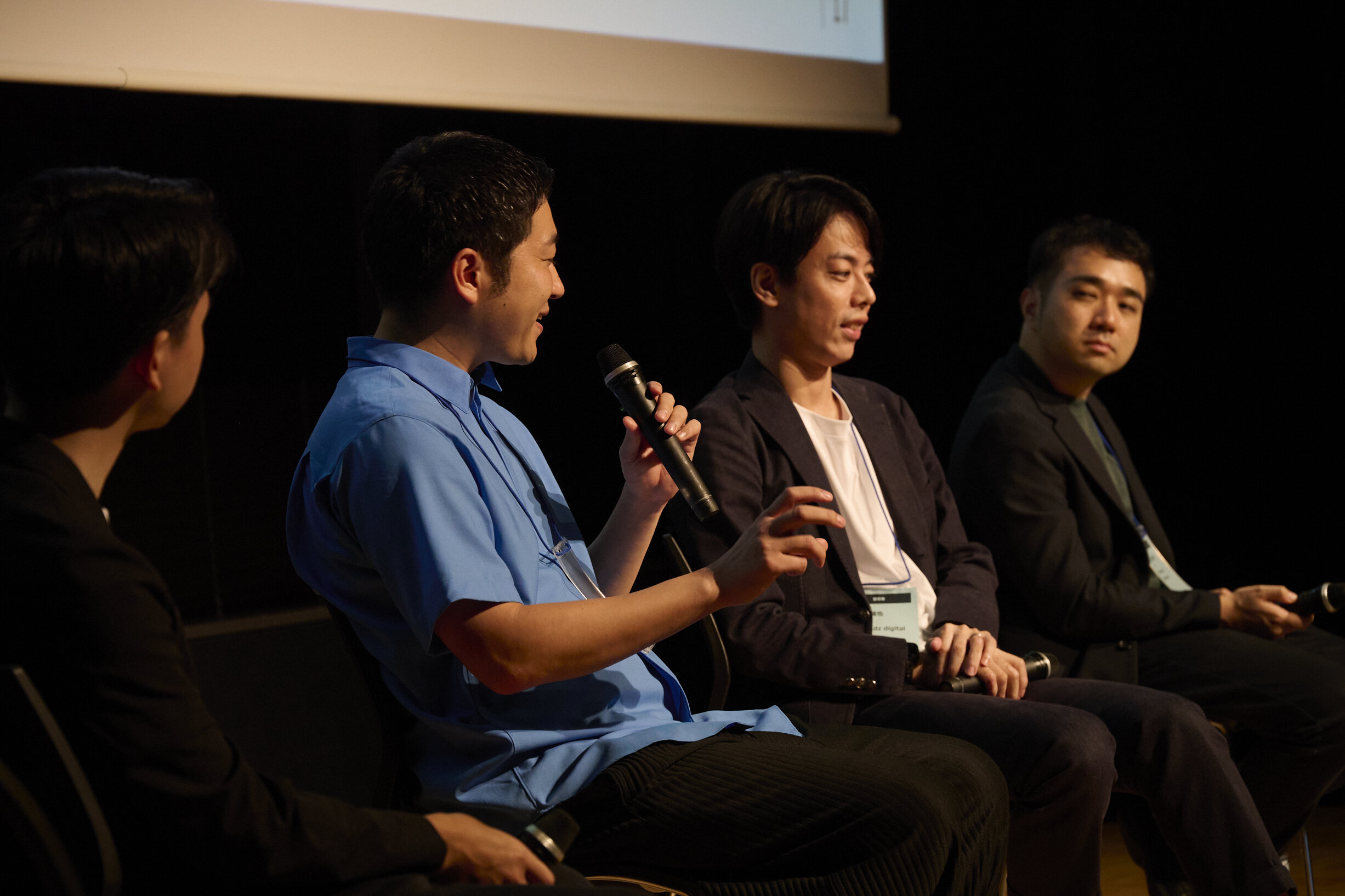
Mr. Katayama of Preferred Networks, who holds a doctorate from the Graduate School of Engineering at the University of Tokyo, explained the recent technological evolution of generative AI. "Local LLMs are becoming smart enough to handle sophisticated processing, which is enabling large enterprises to utilize AI, such as by using on-premise solutions for highly confidential data," he noted.
Meanwhile, Mr. Itai of secondz digital, which primarily develops and implements AI agents for large corporations, offered his perspective: "We're at a stage where some large companies are just beginning to introduce AI agents. The degree of adoption varies by industry, which is starting to create a gap in productivity. While there are cases in industries like law where context engineering is being practiced, the current demand is greater for simpler investigation and analysis that precedes that stage."
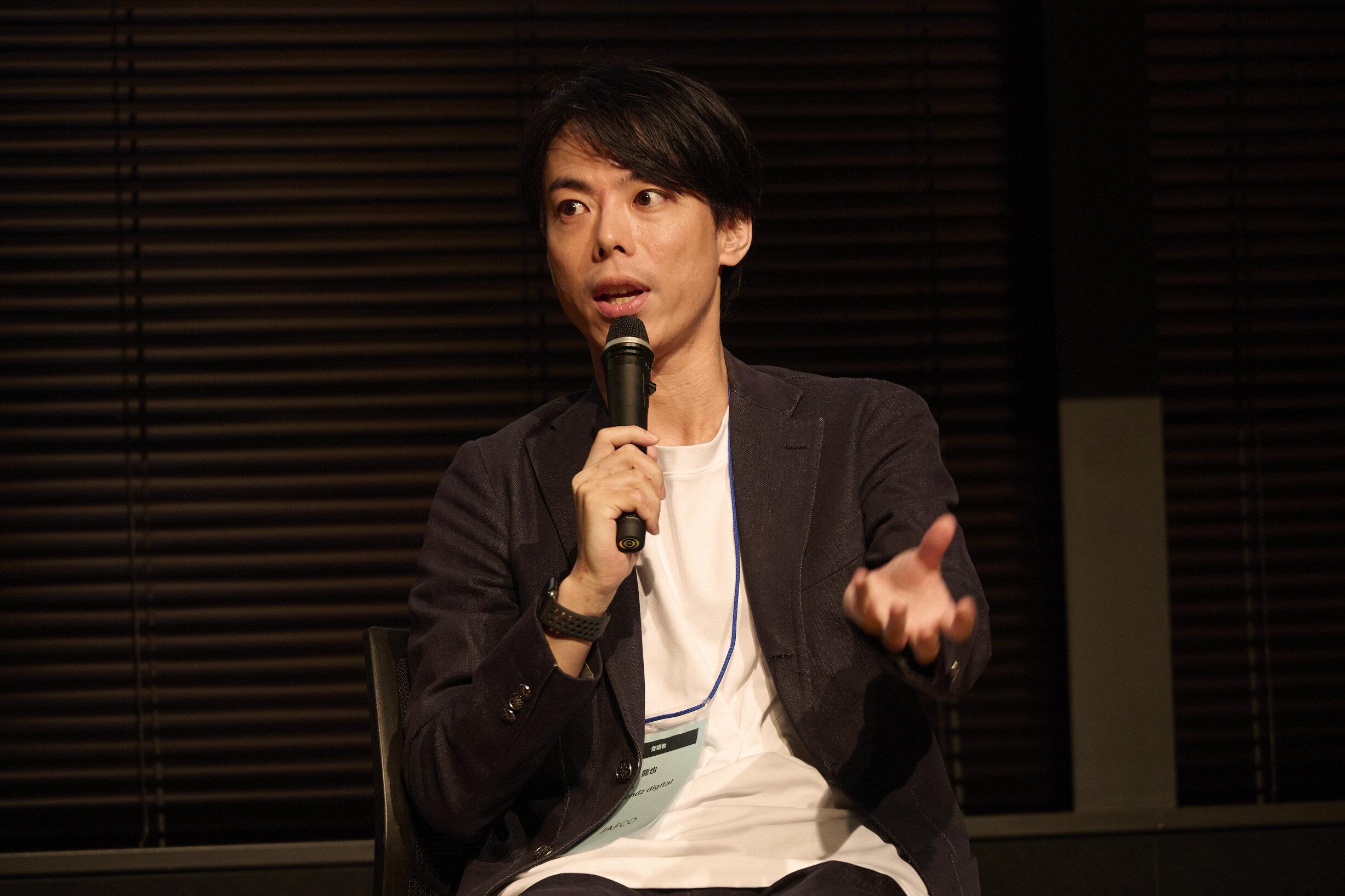
Mr. Sumiyoshi of DeNA spoke from his position working within a large enterprise. "In our company, usage patterns differ by job function. Engineers are using it 100% of the time, and departments that rely heavily on search might use tools like Deep Research. But for others, it's a process of individual trial and error. Integrating it into workflows has also been surprisingly difficult," he said, sharing the reality on the ground.
Companies That Are Adopting Generative AI vs. Those That Are Not
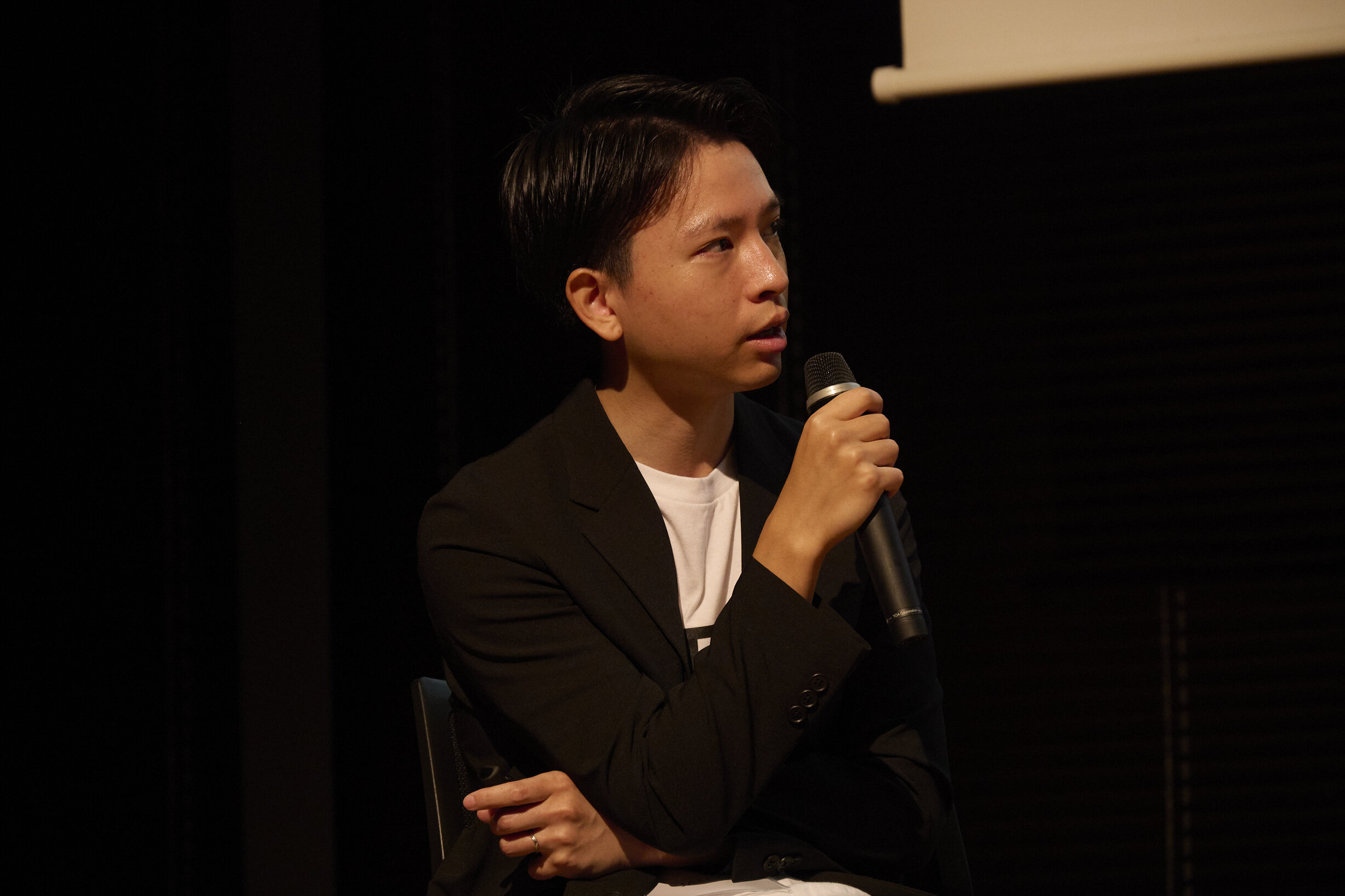
When JAFCO's Mr. Tanahashi asked about the difference between companies that are successfully adopting AI and those that are not, Mr. Sumiyoshi replied, "It's important to have a team with engineering literacy. On top of that, companies that have a clear vision of how much cost can be reduced and how much upside can be created through AI adoption tend to move forward more quickly."
Mr. Itai added, "It is crucial to properly recognize the intersection of ever-evolving 'AI technology' and the 'tasks that AI can handle.' There's also the aspect that if an influential, high-performing department actually uses it and gets excited, it's easier to spread across the entire company. Even starting with a small team is fine. The key is to just try it and get to a state of 'understanding,' which makes it easier to proceed."
Mr. Katayama also pointed out that "information security policies are a challenge for many companies in AI adoption." In response, Mr. Itai offered a potential solution: "We sometimes propose to clients that they first create a framework that sets aside security and data governance for a moment and then integrate those elements later."
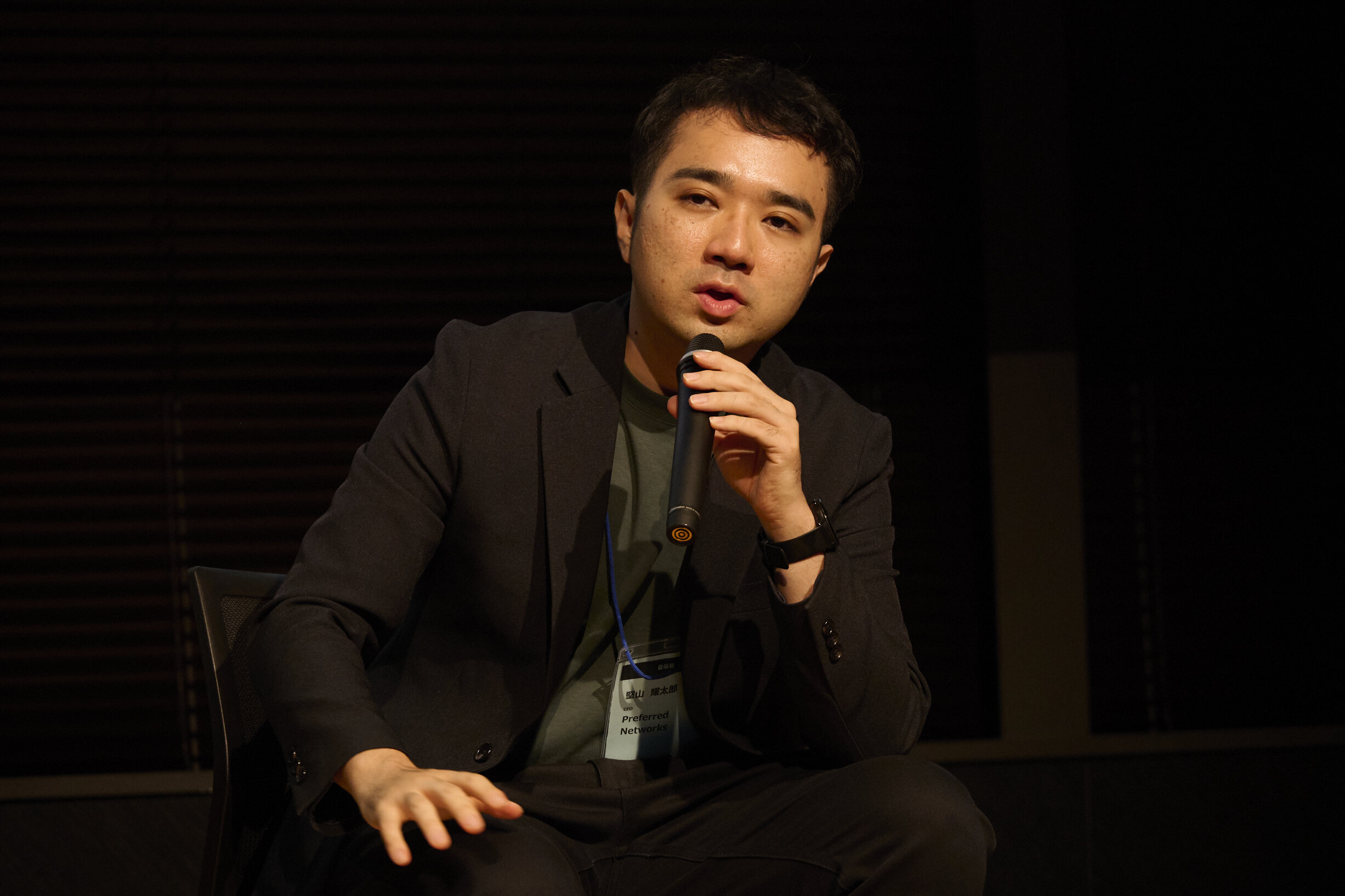
Recent Hot Topics
The final part of the session turned to the generative AI topics that the three speakers are currently focused on. Mr. Itai brought up "AI search." "The way companies compare and consider services for adoption is shifting from 'Googling it' to 'asking ChatGPT.' This is increasing the need to be conscious not of SEO, but of AIO (AI Optimization) or AEO (Answer Engine Optimization)," he said.
Mr. Katayama highlighted the "Forward Deployed Engineer," a role that has gained attention since being adopted by OpenAI. An FDE is a professional who works deeply within a client's organization to build AI solutions optimized for each customer. "This is something OpenAI started precisely because their models became sufficiently intelligent and integration has entered every phase. This also represents a worldview where OpenAI becomes like Accenture, and I feel it has significant implications for the startup world," he commented on the trends at OpenAI and AI startups.
Mr. Sumiyoshi, involved in creating new businesses, said he has long been interested in the "relationship between people and data." He surmised, "The more you use an AI service, the more it learns about you, the quality of your data improves, and it understands you even better. Products that are built on the premise of this self-reinforcing cycle of experience will likely become stronger in the market going forward."
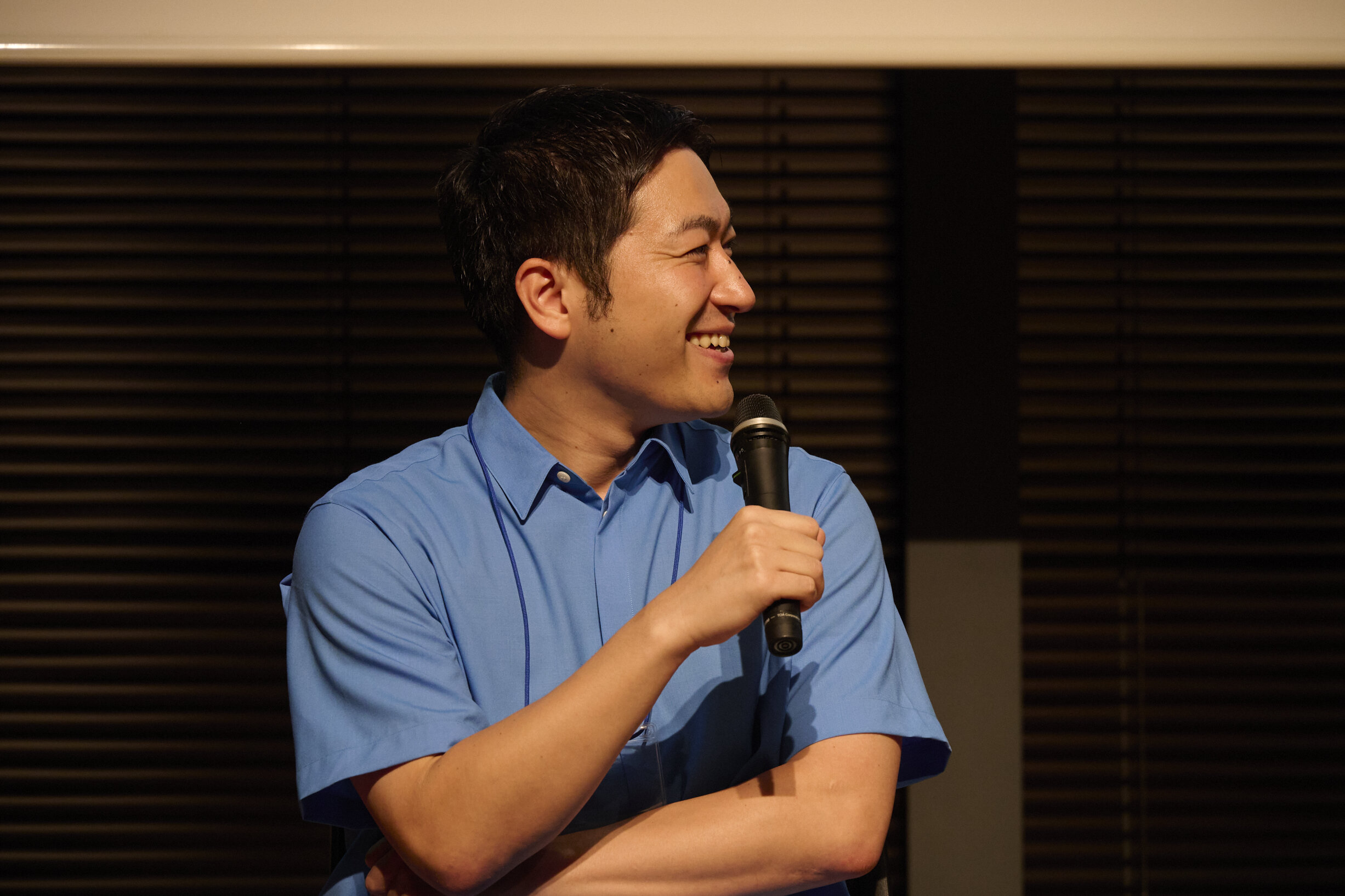
Session 2: The New Trend in Business Expansion: The "Roll-up Strategy"
The second session's theme was the "roll-up strategy," which aims for growth by acquiring multiple small companies in the same industry. The speakers were Sou Miyazaki of newmo, a mobility startup expanding its business through M&A of taxi companies, and Shin Hasegawa of MOON-X, which supports brand growth through "co-creative M&A." JAFCO's Yuki Tanaka served as the moderator.
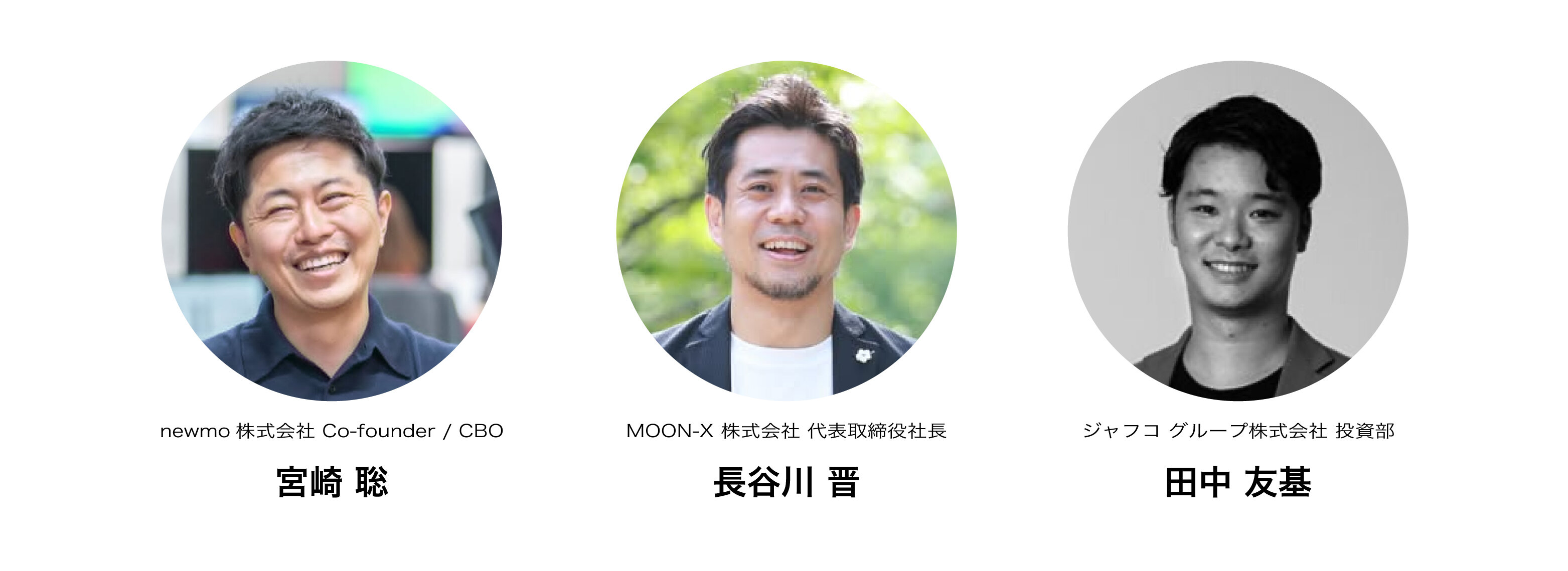
The Reality of "Roll-up" as a Buzzword
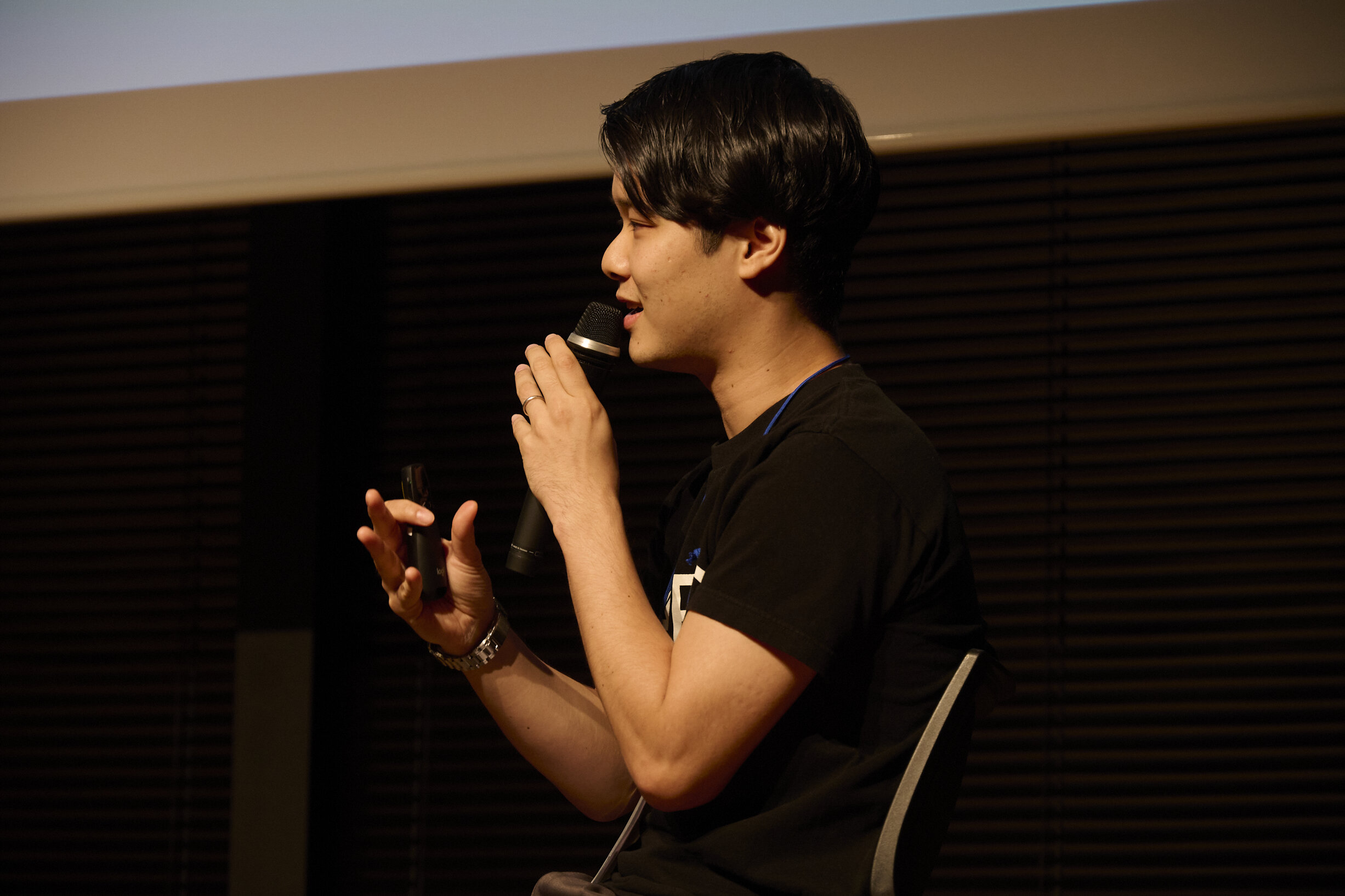
Mr. Tanaka began by asking the two speakers how they feel about the recent trend of "roll-up" and "M&A" becoming buzzwords. Mr. Hasegawa offered his frank impression: "It's often said that 'M&A is the ultimate growth strategy,' and I am truly coming to realize how true that is. The impact on business growth and organizational vitality is explosive. On the other hand, the difficulty of making it succeed is also ultimate. You have to bear the responsibility for the lives of the employees who join through the M&A and their families."
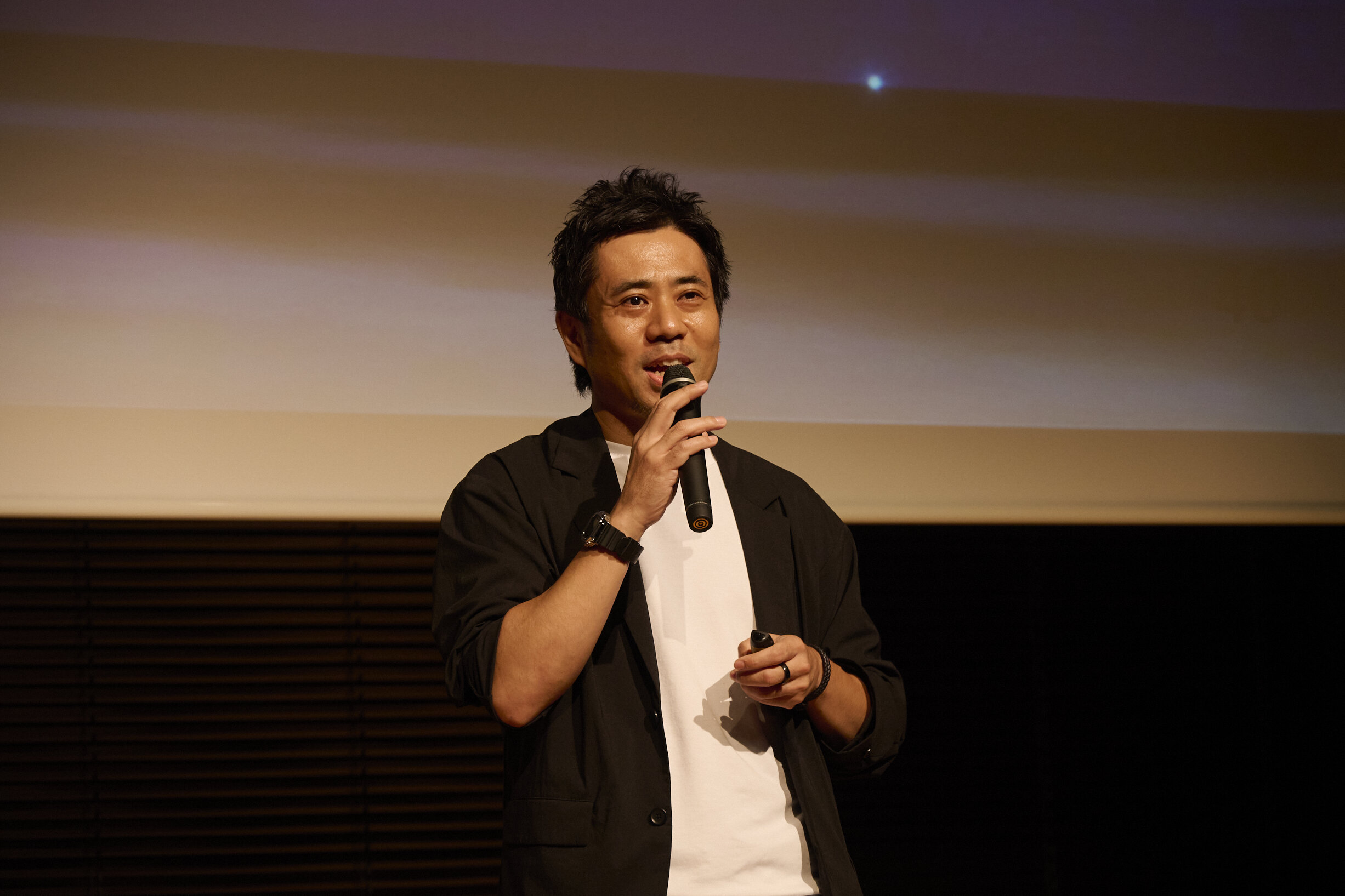
Mr. Miyazaki, while sharing newmo's track record of growing into the third-largest taxi company in Osaka (as of July 2025) through the M&A of three companies, described the reality: "What we do is quite gritty. We acquired the first company without knowing anything, acquired the second at a profitable price and went through trial and error to improve its management, and for the third, we acquired it with a clear vision for post-M&A management improvements and executed it as planned. It's crucial to patiently build up results one by one to increase the probability of M&A success."
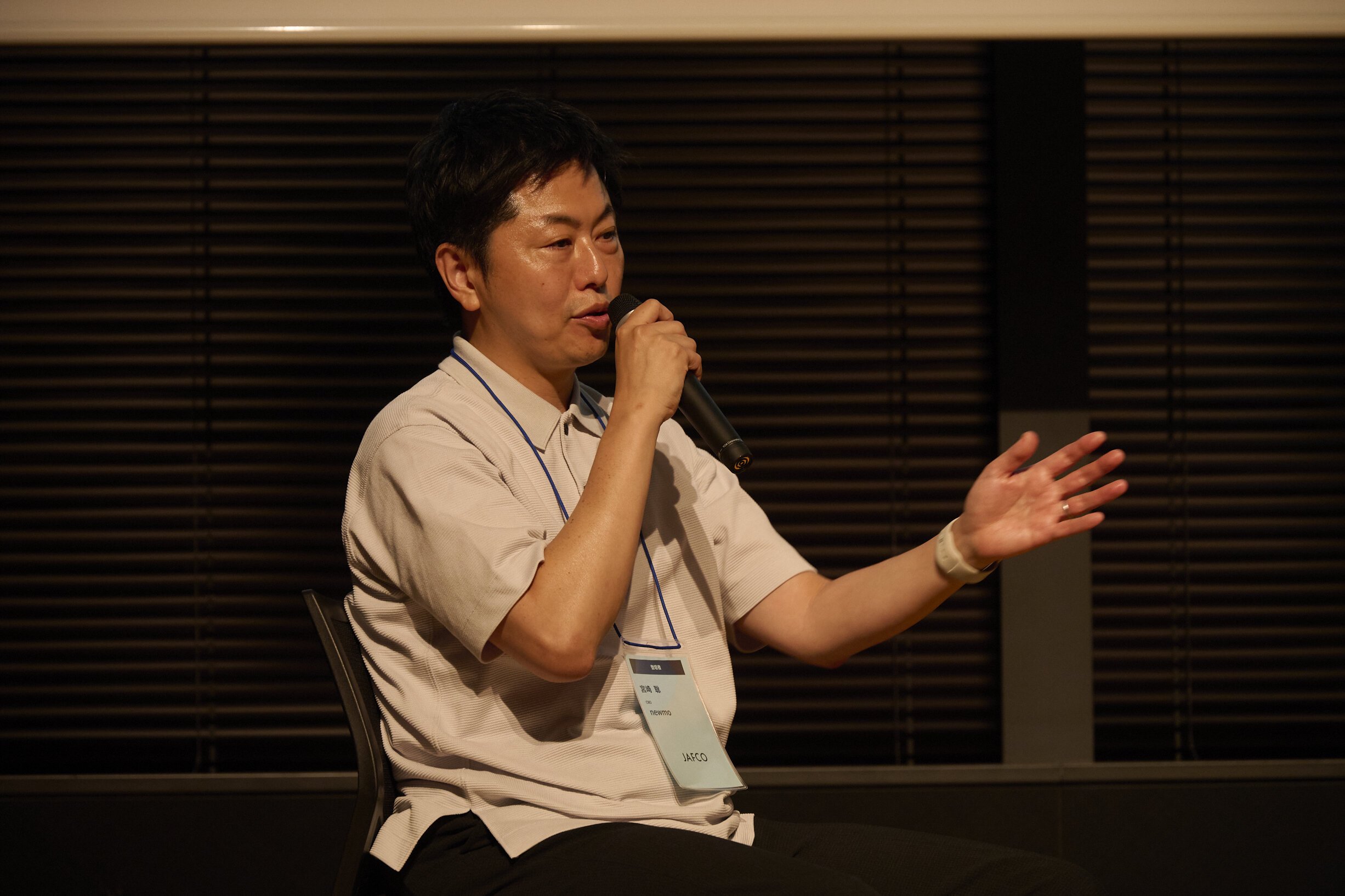
The Difference Between a "Product Growth Strategy" and a "Roll-up Strategy"
Mr. Miyazaki, who has experience at CyberAgent and a content startup, answered, "With the former, even if the product and market are good, the growth rate and probability of success can change depending on factors like market timing, so you could say it's highly volatile. On the other hand, with a roll-up, if you understand the industry structure and patiently execute on improvement points one by one, it will surely lead to results."
Mr. Hasegawa, who has experienced several companies where M&A is a key management strategy, stated his view: "The two shouldn't be contrasted; they are a set. The goal of M&A is not the deal closing but how much you can grow the business from there. There's a saying, 'Buy or Build,' but at our company, it's 'Buy and Build.' It's natural to create new products and innovations after an M&A, expand the category, and achieve continuous growth."
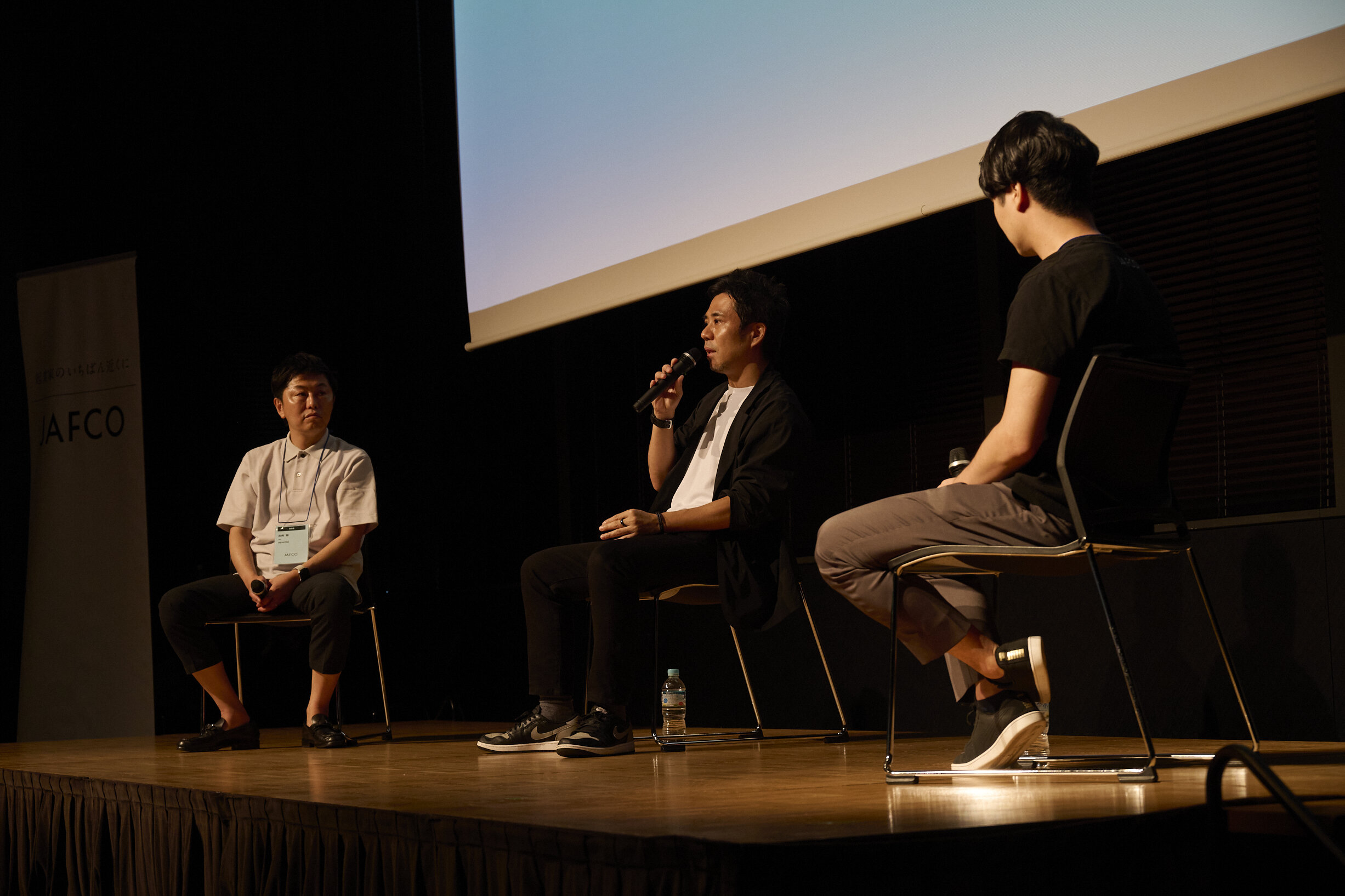
Regarding the difference between acquiring multiple small companies versus one large company, Mr. Hasegawa said, "What needs to be done is the same regardless of scale. However, we do place importance on assessing post-M&A scalability." Mr. Miyazaki added, "The tasks are the same, but the number of business locations, taxis, and the presence of land owned by the acquired company can significantly change the post-M&A measures and the degree of before-and-after transformation."
Q&A with the Audience
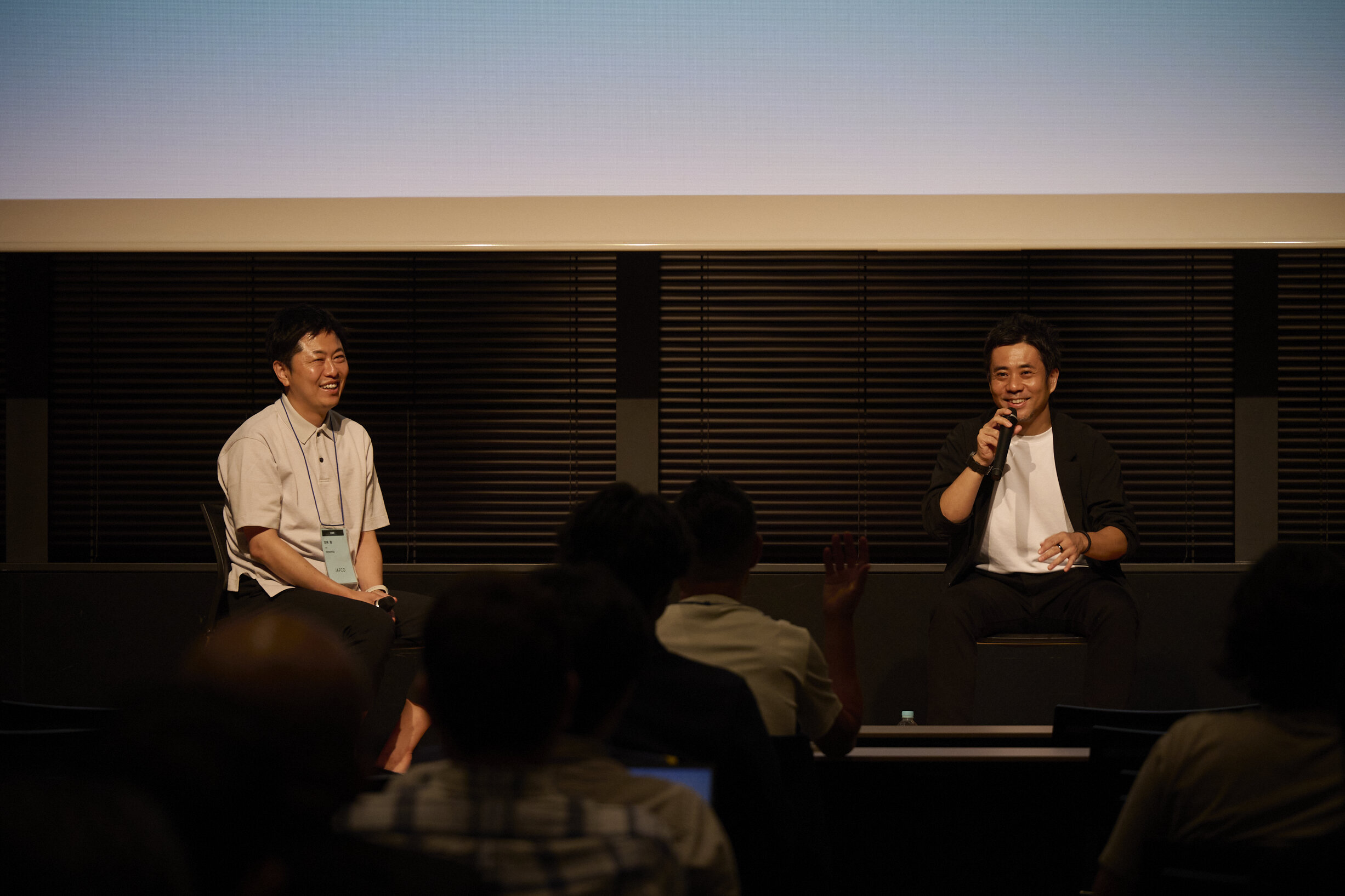
The latter half of the session was a Q&A time with the event participants.
In response to the question, "What is the ratio of your company's growth from acquisitions versus growth from the value-up of acquired companies? And what is the ideal ratio?" Mr. Hasegawa replied, "I don't think there's a right answer, but in our case, the portion of growth as an existing business after the M&A is overwhelmingly higher. I think it depends on what kind of story you tell and how you set expectations for the owners and employees who join at the time of the M&A."
To a question from a startup founder who is streamlining due diligence with AI—"Regarding due diligence methods for growing a business, are there winning patterns for each industry?"—Mr. Miyazaki answered, "It differs by business domain, and even within the same taxi industry, there are various ways to grow a business. In our case, we are taking the approach of increasing the operating rate by strengthening recruitment and achieving business growth through cost reduction and labor-saving via our internal DX team. But the approach will likely change depending on the company's situation."
Session 3: Entry Opportunities for Startups in the Content Business
The final session featured Ryu Nakayama, who directed the TV anime Chainsaw Man and founded the content studio Andraft in 2023, and Shota Okuno of Plott, a company that plans, produces, and develops business for IP content including Teikou Penguin. Together with JAFCO's Ayuki Shirakawa, who moderated, they discussed trends and entry opportunities in the content business.
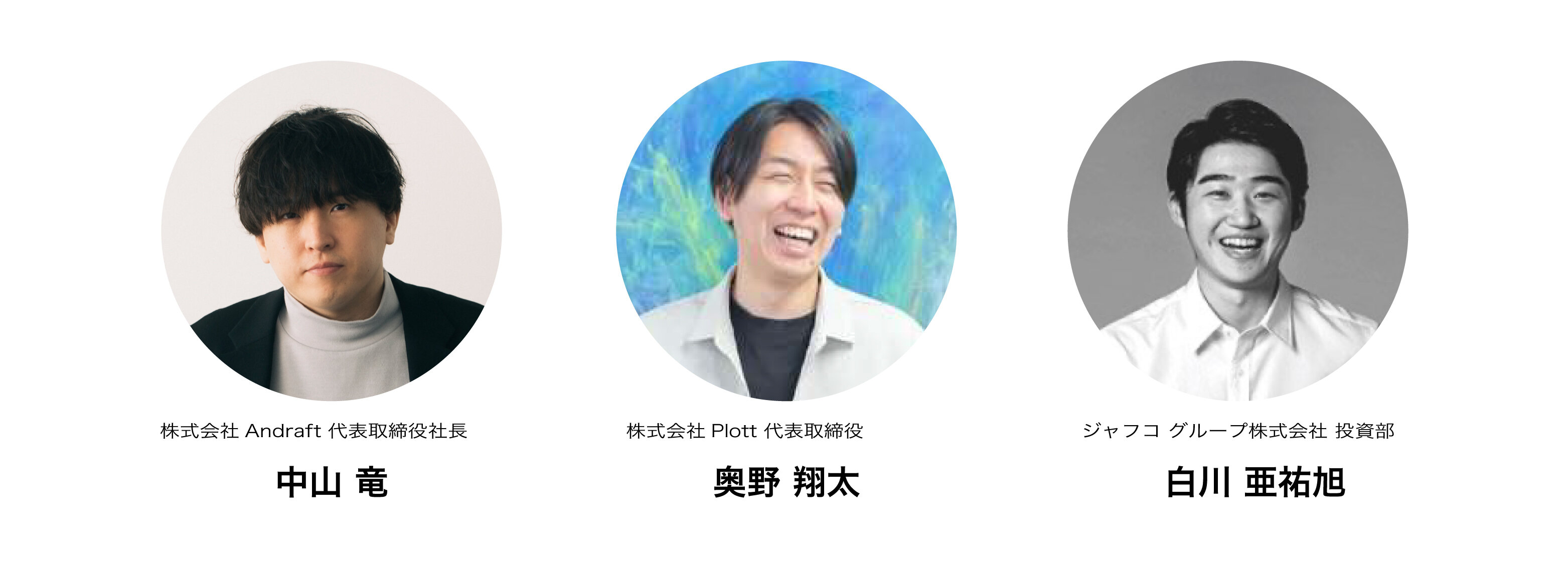
How to Launch a Content Business from Scratch
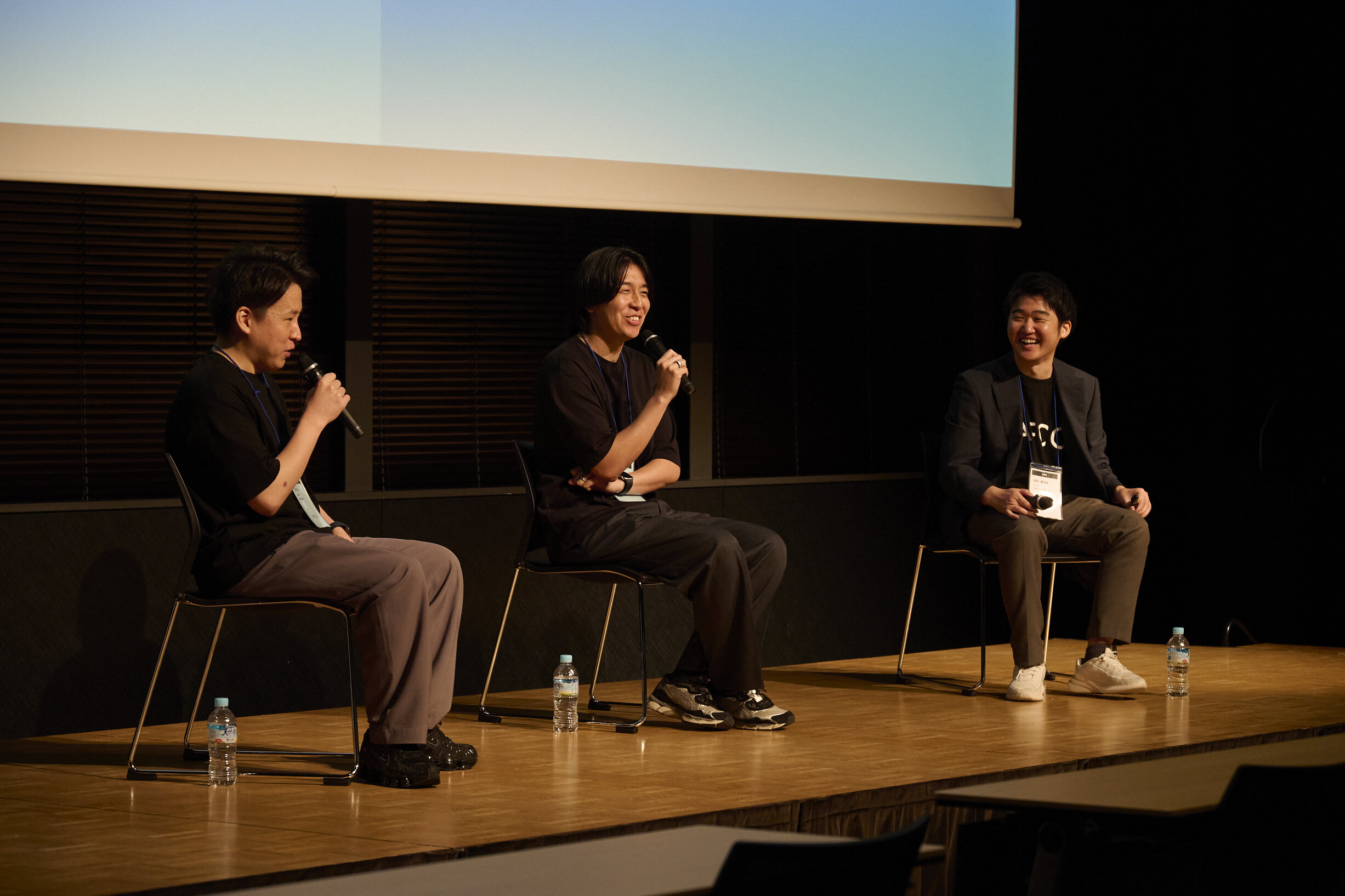
First, Mr. Shirakawa asked about the key points for launching a business from scratch in the content industry.
Mr. Okuno, who has been producing VTubers and games since his student days and is now growing his company with a short-form animation business, reflected on his founding days: "There are broadly two patterns. One is to take advantage of the market's nascent stage to create a large volume of content cheaply and build a track record. The other is to enter through client work for other companies and then, when the time is right, compete with your own money. Our company was the former."
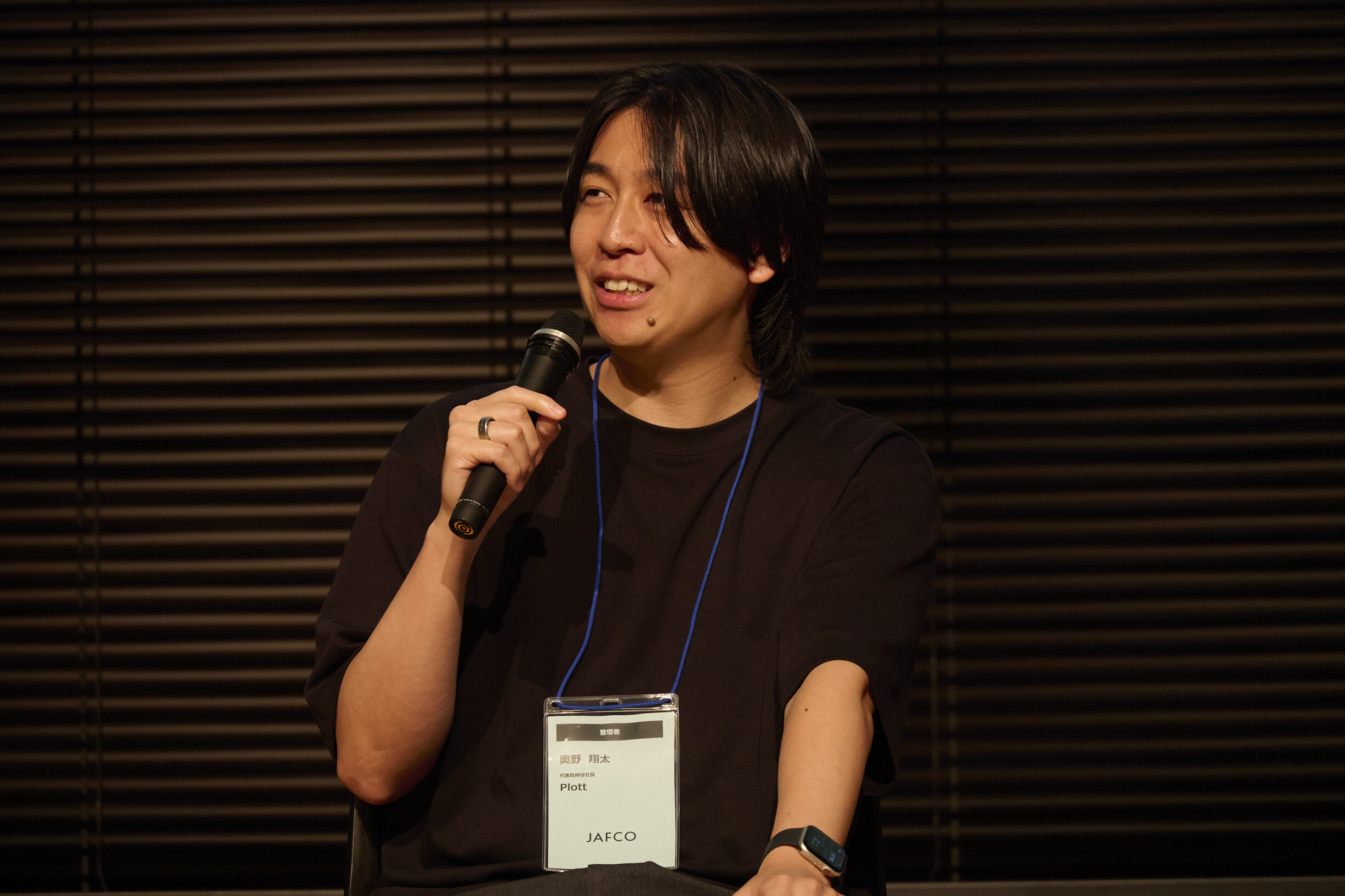
Mr. Nakayama, who entered the content business as an entrepreneur from an anime creator background, shared his reasons for starting his company: "While business opportunities are arising in the anime industry, such as market expansion and overseas advancement, traditional anime production companies have an image of being like 'mom-and-pop workshops.' Personally, I think that's fine too, but with the development of AI and the rising quality demanded by viewers, I felt I had to create an innovative and flexible organization to produce even better works."
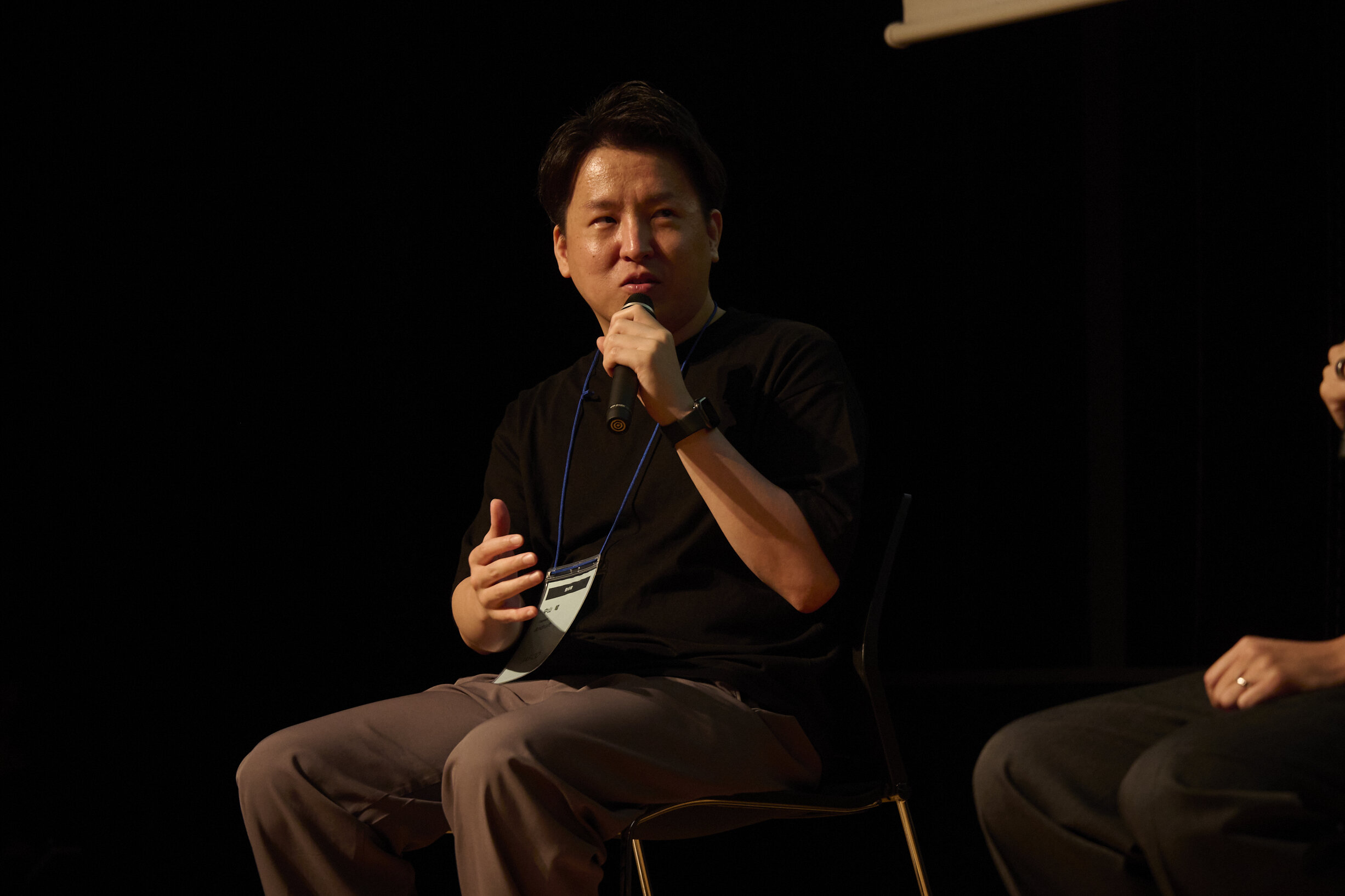
Hints for Success in the Content Business
To Mr. Shirakawa's question, "I think that 'how you engage with big IP' is important for success in the content business. Do you feel that such opportunities are increasing for emerging content companies?" Mr. Nakayama commented, "There are examples of companies that have worked on theatrical films within a few years of being founded, but what they have in common is that the representative is a creator with a proven track record. Also, such work is 'high-risk, high-return' as it takes time and money to complete. But I think there is very much a viable path of first solidifying your foundation with 'low-risk, medium-return' commissioned projects and waiting for the right timing."
When asked, "With the power of creators growing within the content industry, I think more companies are becoming profitable by taking a large stake in production committees. Could there be an opportunity for startups to enter the industry by involving powerful creators?" Mr. Okuno replied, "I think there's a huge opportunity," and introduced a past example of Mr. Nakayama collaborating with a VTuber platform startup. Mr. Nakayama explained the background: "Initially, I was commissioned as a creator, but as we talked, I ended up getting involved in a business context."
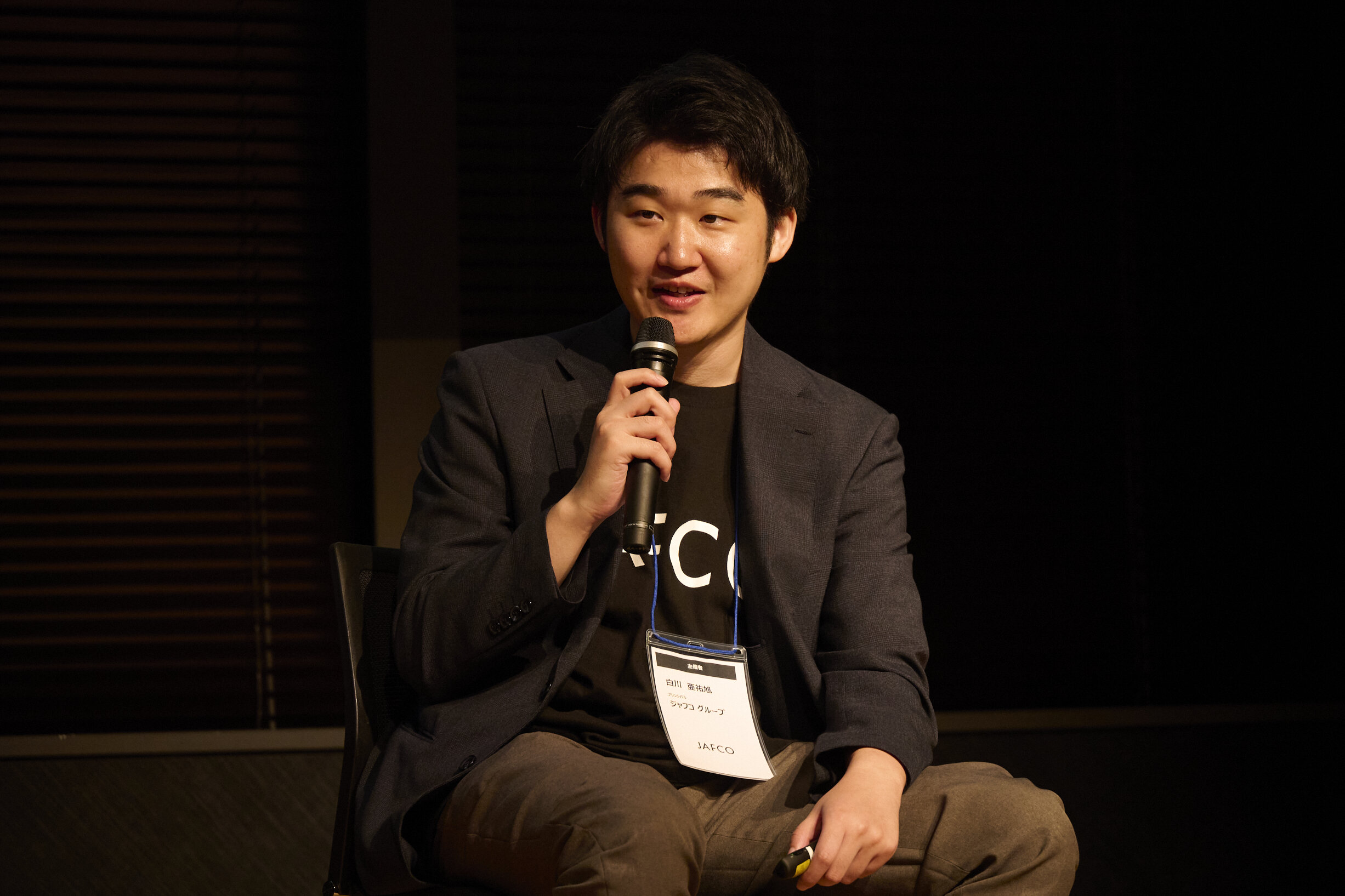
Expectations for Seed-Stage Entrepreneurs Tackling the Content Business
As a message to the seed-stage entrepreneurs, Mr. Okuno commented, "In the entertainment domain, booms change every 3 to 5 years. I personally think it's important to try everything. At the seed stage, the basic approach is to release content where the infrastructure is already in place, so you can take on various challenges without much capital. I want you to challenge yourselves a lot." Mr. Nakayama added, "The anime industry doesn't move that fast, but I hope people won't rest on their laurels and will instead proactively take on challenges while always incorporating new technologies. It's also important to learn from people who have more knowledge than you."
Finally, Mr. Shirakawa concluded the session: "More content startups will continue to emerge. I believe it is one of the hottest fields right now. The speed at which a market establishes itself and gains users is surprisingly slow. For example, you might think that creating anime with AI is still impossible, but in reality, the seeds may have already sprouted. I want entrepreneurs and companies to continue to take on challenges and pay attention to this space."
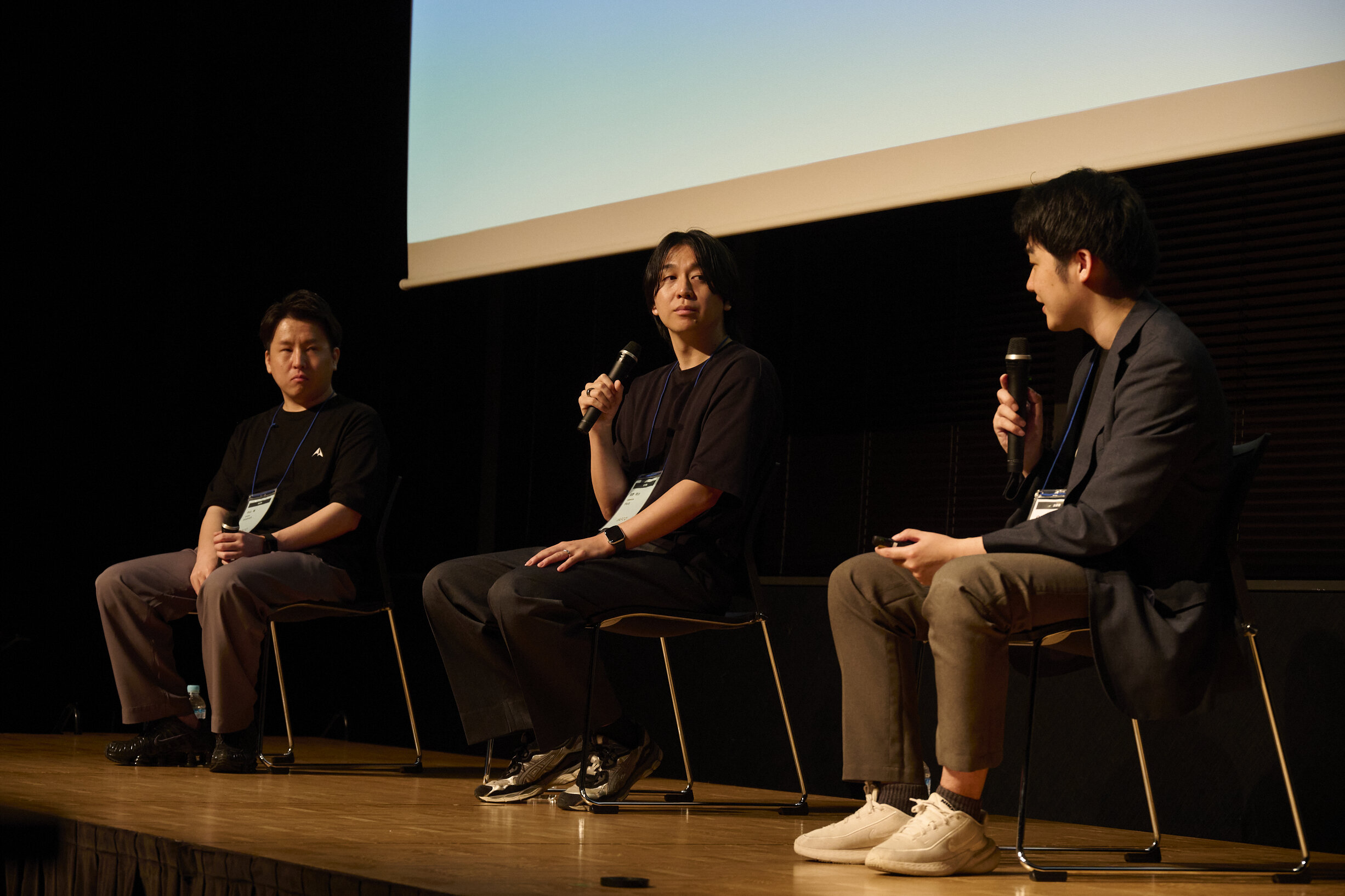
In addition to the session stage, a Meet Up area was set up, where major corporations, angel investors, and seed-stage entrepreneurs were seen actively communicating. An exhibition space was also installed at the entrance to the Meet Up area.
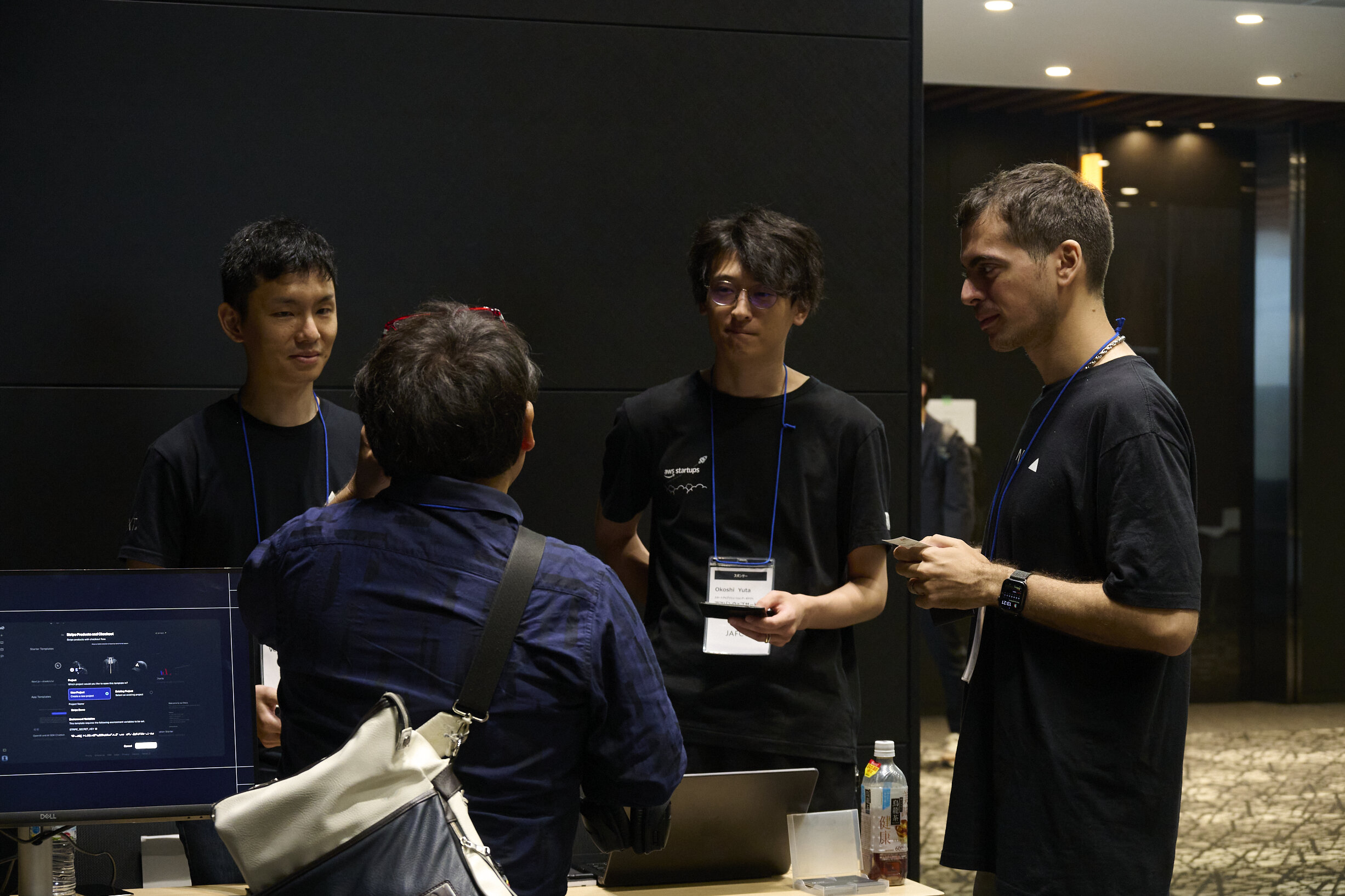
In Part 2, we will report on the pitch contest featuring five seed-stage startups.
